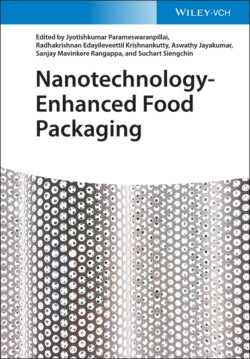Читать книгу Nanotechnology-Enhanced Food Packaging - Группа авторов - Страница 37
2.2.3 Chitin and Chitosan
ОглавлениеChitin is considered the second most abundant biopolymer in the world. Usually, this biopolymer is isolated from the exoskeletons of crustaceans such as crabs, lobsters, shrimps, squid, among others [51–53]. The molecular formula of chitin consists of the 2-acetamido-2-deoxy-β-D-glucose through a β (1,4) linkage, considered a polysaccharide (cellulose) with hydroxyl groups at position C-2 replaced by an acetamido group [51].
Chitosan is a derivative obtained by the deacetylation of chitin (deacetylation >50%) by means of alkaline treatment [44]. Chitosan is a cationic polysaccharide with linear structure integrated by two monomers, D-glucosamine (2-amino-2-deoxy-β-glucopyranose) and N-acetyl-D-glucosamine (2-acetamido-2-deoxy-β-D-glucopyranose), linked by means of 1,4-glycosidic bonds [54]. Chitosan is a semi-crystalline biopolymer, nontoxic, biocompatible, biodegradable, and with antifungal, antimicrobial, and antioxidants properties [55, 56]. Due to these characteristics, chitosan is a biopolymer widely used in food packaging applications [55, 56].
Films based on chitosan have good permeability to gases (CO2 and O2) and acceptable mechanical properties; however, these materials are not good barrier against water vapor. The properties of chitosan films are impacted by the chitosan morphology and molecular weight, as well as by the N-acetylation degree, solvent type used to manufacture films, among others [54, 57, 58]. Similarly, edible coatings based on chitosan have been applied on fresh fruit and vegetables, as well as on minimally processed, decreasing the respiration rate and delaying the senescence of these products. In addition, coatings based on chitosan can be used to reduce the moisture loss and maintain the overall quality of food products [59]. Therefore, several researchers have used this macromolecule to improve the physical and mechanical properties of films and coatings, including blends with another polymers and nanoparticles. In Table 2.3, recent studies about chitosan films and coating applied in food products are listed.
